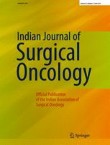
Abstract
The aim of this study was to analyze the influence of neoadjuvant treatment on nodal harvest after rectal cancer surgery and its impact on long-term oncological outcomes. A retrospective analysis of patients with rectal cancer who received curative intent treatment from 2002 to 2012 in our institution was performed. Data on various clinic-pathological and treatment details were recovered from the records. The number of nodes harvested after surgery was analyzed. The influence of number of nodes harvested on overall survival and disease free survival was analyzed. Among the 459 patients included in this study, 326 underwent surgery after neoadjuvant treatment (NAT). The mean number of nodes harvested was significantly lower in patients who received NAT compared with those who did not (8.9 ± 5.77 vs 14 ± 9.84, p < 0.001). However, the mean number of pathologically positive nodes was not significantly different. A minimum of 12 nodes were harvested in only 27.9% of patients who received NAT. No lymph nodes were identified in the specimen in 15 patients (4.6%) who underwent surgery after NAT. The only independent factors influencing harvest of a minimum of 12 nodes were patient age and NAT. The 5-year overall survival was not significantly different in patients in whom < 12 or ≥ 12 nodes were harvested (64% vs 69% respectively, p = 0.5). Neoadjuvant chemoradiation significantly reduces nodal harvest in patients undergoing treatment for rectal cancer. However, this reduced nodal harvest did not adversely impact survival in patients. However, every effort must be made by the surgeon and the pathologist to maximize the nodal harvest.
Δεν υπάρχουν σχόλια:
Δημοσίευση σχολίου
Σημείωση: Μόνο ένα μέλος αυτού του ιστολογίου μπορεί να αναρτήσει σχόλιο.